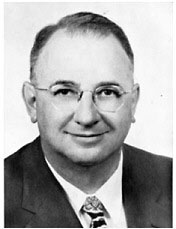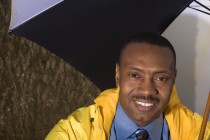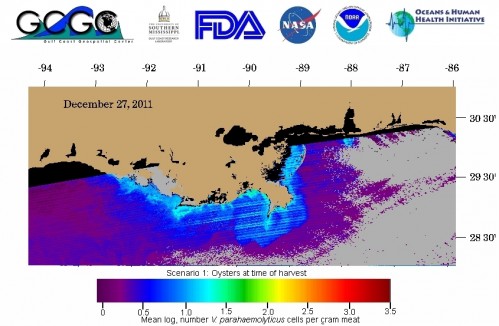You can’t go home again, novelist Thomas Wolfe famously explained in a novel published, ironically, in 1940–the year Franklin Delano Roosevelt moved the U.S. Weather Bureau from the Department of Agriculture to the Department of Commerce.
President Obama’s intention to move the National Oceanographic and Atmospheric Administration to the Department of Interior raises all sorts of questions, political, economic, and scientific. It will be impossible to avoid these questions as we gather in New Orleans.
But some people already frame the question as a matter of philosophical, social, and stylistic fit–of how a scientific entity makes a home in a bureaucracy generally obsessed with the back and forth of entitlement and regulation. Environmentalists, for example, have been quick to wonder how scientific management of ocean fishing fares when paired with the agency permitting offshore oil drilling.
As reported in Science online, Scott Rayder, former NOAA chief of staff and now with ITT Exelis Geospatial Systems, noted numerous correspondences between the portfolios of NOAA and its Interior counterparts, yet added, “But one concern is how would these cultures fit together? They have different ways of doing business.”
Finding the right culture for weather services has been an age old problem. AMS Policy Director Bill Hooke goes into detail on the long history of migrations within the federal government from Surgeon General, to Smithsonian, to Army Signal Service, to Agriculture, to Commerce, concluding that there’s an evolving conflict between the ever intensifying, diversifying need for a NOAA-like agency that integrates science and service and a continual political desire to place the agency where it might seem most at home.
A community that serves the development of an economy, sustainability of the environment, and basic security of citizens facing severe weather every day and climate change in the long run is never really going to have just one natural fit in a political scheme. Everyone needs a piece of NOAA. So ultimately the job needs to be done, single-mindedly, and at the same time NOAA is always going to engage nearly every nook and cranny of national welfare. As Hooke points out that the place of this key piece of our community within the federal firmament probably matters less than we might think:
The Earth itself didn’t reorganize. It’s still working the same way, proving to be resolutely variable locally, and globally, and on all time horizons. The proposed government reorganization doesn’t add to or subtract from our imperfect understanding of that Earth. The little bit we know, we still know. The part that remains undiscovered is still opaque. The mechanics of translating knowledge into social benefit remain absorbing. Our little piece? It still needs doing. The urgency and importance of our work continues to grow.
These facts give hope but they don’t solve the cultural question: a mission that grows will never be completely at ease anywhere for long. What is true for people has proven true for a scientific community. As your own experiences change you, home becomes elusive. So the peripatetic governmental entity that has been at the core of our community does not clearly belong anywhere because, well, the notion of weather service has evolved as well. We don’t even call it that, anymore–we talk about national hydrometeorological services, climate services, space weather, sustainability, public health, and so much more.
What is our culture, and how much has it changed? The study of culture is the province of anthropologists for a reason: they are trained to cultivate an outsider’s perspective. De Toqueville’s observations as a Frenchman in America are all the more trenchant for the same reason that Margaret Mead’s observations of Samoans give us insight into our own behavior. All the more valuable, then, are the observations of a onetime-outsider, George Siscoe, a solar physicist and member of one of our most recently developed branches, space weather. Amidst ten historical stages of fundamental change in our community, Siscoe noted a continuity as well:
The orientation of the terrestrial meteorological community, including its research community, is by and large in
the direction of improving forecasts. Most researchers in meteorology might not consciously recognize this, but
program managers and agency heads apparently do, as evidenced by research programs that they define and
support. Moreover, it imbues research meteorology as a community trait, like a shared language. Meteorologists
acquire the trait from their undergraduate and graduate courses and from the example of professional icons such
as Carl-Gustaf Rossby, Jacob Bjerknes, John von Neumann, Edward Lorenz, and Jule Charney. The result is
coherent, discipline-wide progress, discernable against the separate advances of intradiscipline specialties, that
moves the full front of operational forecasting forward. Orientation toward improved forecasts, be it of storms,
global warming, or the ozone hole, constitutes a binding and supportive matrix within which the whole
discipline is consciously or unconsciously embedded.
The weather community can’t go back to being a mystery for medicine men, a toy of pure researchers, an exercise of military regimen, or a sleepy backwater for farmers, nor, for that matter, the business that is the nation’s business. Somehow, in the course of its growth, it is all of these and more: something recognizable but clearly different. What has become–or what it is to become–will probably hinge on this relentless drive for operational improvement. That culture will determine where home really is now, regardless of where the government puts it.



